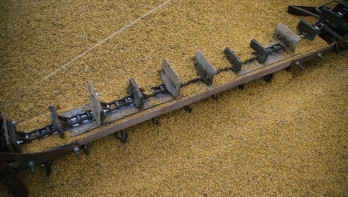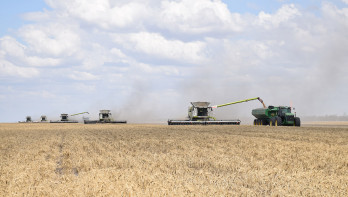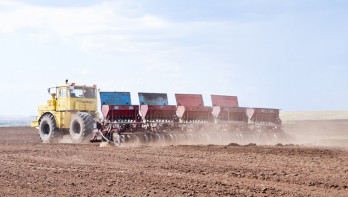Analysis Grains
Russia's grain export lags behind last season
Competition from the Black Sea region is often mentioned as a cause for the moderate European grain export. This theory is not supported by the Russian export figures. In the first half of the season, Russia exported 5.6% less wheat. Farmers in Brazil are facing problems of a completely different nature. An expected good grain harvest painfully exposes the lack of sufficient storage facilities in the country.
The March contract for wheat on the Matif closed €2.75 lower at €231.25 per ton yesterday. On the CBoT, wheat took a small step up by 0.2% to $5.46¼ per bushel. Corn closed 0.5% lower at $4.74½ per bushel. Soybeans mostly moved sideways and ultimately closed 0.1% higher at $10.43 per bushel.
European wheat exports continue to stutter. Up to January 12 of the current season, the EU exported 11.49 million tons of wheat. Last year at this time, the counter stood at 17.63 million tons. Strong competition from wheat from the Black Sea region is cited as a major cause for the moderate European export.
This theory is not confirmed by the export figures released by the Russian Grain Union. In the first half of the export season (July to December 2024), Russia actually exported 5.6% less grain compared to a year earlier. The export for the past half-year amounted to 34.26 million tons compared to 36.21 million tons a year earlier. Wheat exports, however, increased by 0.7% to 30 million tons. Barley exports decreased by 27% to 2.9 million tons. Russia exported 46% less corn compared to a year earlier, namely 1.3 million tons according to the Grain Union.
"Based on an available grain stock for export this season of 56 million tons, of which 46 million tons are wheat, 61% of the grain stock and 65% of the wheat stock had been exported by January 1," explains Elena Tyurina, chief analyst of the Grain Union to Interfax. "There is still 21.7 million tons of grain available for export, including 16 million tons of wheat."
Problems due to large harvest
Brazil expects a good grain harvest for the 2024/25 season. The total harvest is estimated at 322.4 million tons by the Brazilian government agency Conab. The large harvest poses problems regarding the available storage capacity in the country. According to the Brazilian CBS, there is only 222.3 million tons of storage available. Therefore, an alternative solution must be found for 31% of the harvest. Some of the harvest can be sold and exported directly. Due to wet weather during sowing, some crops were planted late, leading to a delayed harvest. Everything will ripen at the same time, making the limited storage capacity even more pressing, warn local sources.
"The storage shortage reached 124 million tons in 2024, and this year it is likely to increase by at least 5 million tons. With a record soybean harvest and a strong corn harvest, the scenario could become even more critical," warns Paulo Bertolini, chairman of the machinery industry interest group, in the Brazilian media. Investing in additional on-farm storage capacity would be a solution. Bureaucracy hinders investments in silos according to Bertolini.
"For approximately 2 to 3 million reais (approximately €320,000 to €480,000), a farmer can build a simple storage. That is roughly the price of a few tractors. Buying a tractor only requires a bank guarantee. However, building a silo also requires an environmental permit, an installation permit, an operational permit, and a mortgage on the land. All these bureaucratic layers make financing expensive and slow." Without sufficient on-farm storage, traders and processors have to bear the storage costs. This inefficiency in the chain ultimately translates into prices according to Bertolini.




